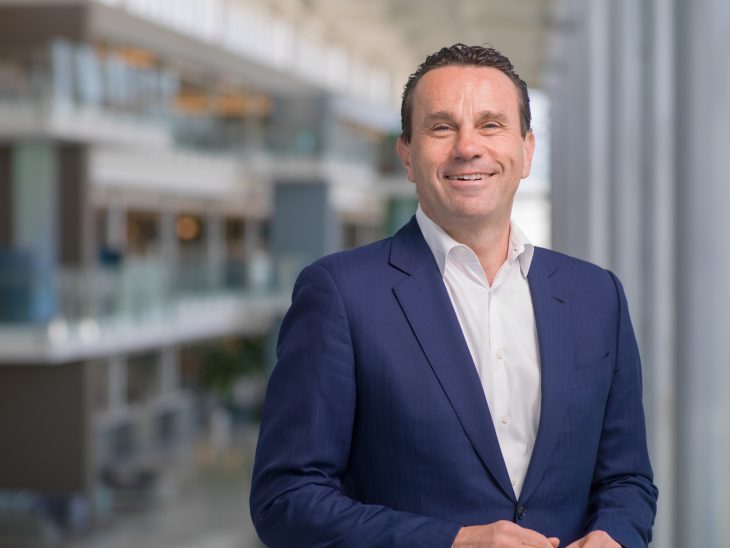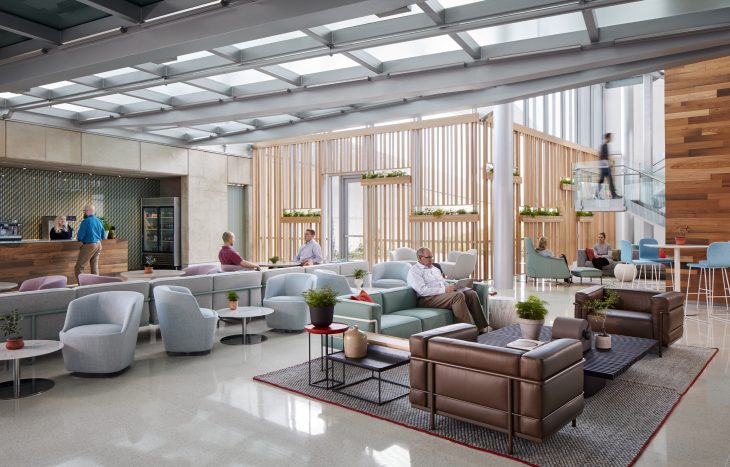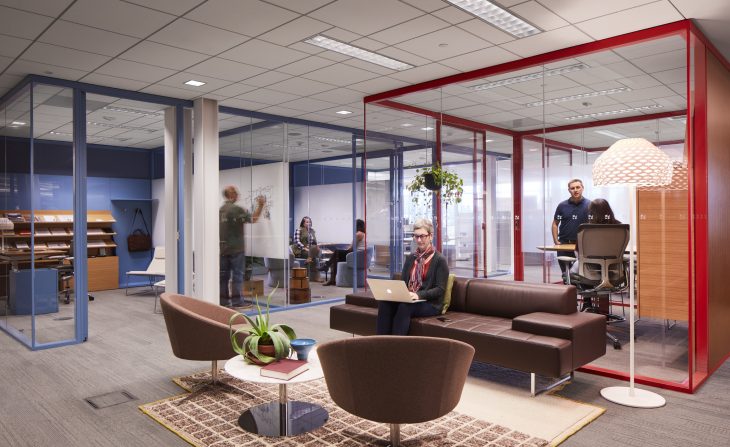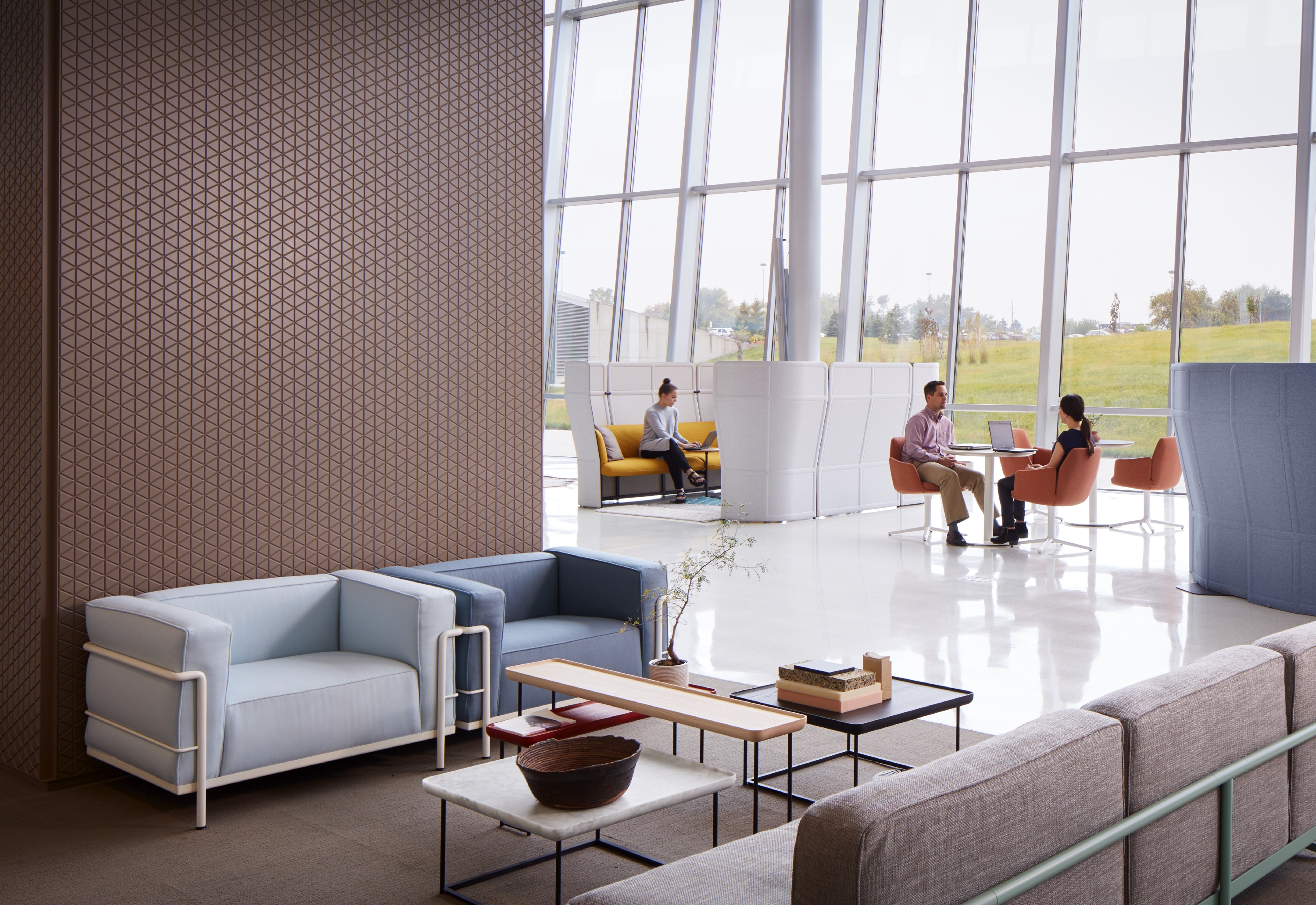Haworth CEO, Franco Bianchi, believes the key to a successful workplace is finding the balance between facility and occupant.
Bob Fox: Can you give us a brief introduction to Haworth and the work you do?
Franco Bianchi: Haworth was founded in 1948 by GW Haworth – we just turned 70 this year! Today his grandson is the chairman of the board. We had north of two-billion-dollars in revenue this past year. We operate all around the world and have roughly 7,500 employees whom we call members to signify our special connection since we are a family company. Today, we operate mostly in the commercial office interiors business, but more recently we have expanded into residential brands. For the past decade, we blended the work environment with more variety, borrowing the design, ingenuity and innovation from best-in-class companies in the hospitality and residential industries.
I know Haworth has focused a lot on culture in the workplace – I’m curious how would you describe your culture?
Our culture is about agility and entrepreneurship. I like to say that I try to run the smallest big company that I can – we’re a very flat organization. There are other companies that have an organizational approach where every decision is made by headquarters. While we do some of that, typically we are more of a network organization than command and control.
You mentioned the entrepreneurial spirit and flat organization. How does your workplace support this kind of environment?
You’ll see executives sitting in rooms with glass walls. We still have private offices, but they are very small, open and transparent – the least private, private offices you could have. I like to think that our workplace communicates that level of free flow. We have a very flexible working policy. Some people work from home, some have no assigned space and can work where they want. We focus on outcome and not how long or where you sit. We try to make sure people feel empowered and not constrained by sitting in a certain location and focus on solving problems and getting the job done.
When you walk into your space, it’s very aspirational in many ways. I’m wondering was that something that you helped shape and is there a message there that you want people to see or feel?
We moved into this current building in 2008, but it feels like only two years ago because we keep it fresh. Our headquarters in Michigan was also a way to speak to our customers and to our members (employees) at the same time, about who we are as a company, who we want to become, and to create a canvas to expand our ways of working. It’s largely worked very well. We believe with the right design mindset, the right process thinking, and the right product offering, you can create a space that works for everyone.
Where do you get the most value out of that space?
We are a unique corporation because for us office space is a tool for problem solving, interaction and communication of our members and our business, but at the same time it’s a showroom. We have seen a positive impact in multiple ways. When people walk into our space, they can immediately understand that Haworth is a global company and that we have unique design intent. I think we do a good job portraying our culture, brand and our capabilities through our space. I like to think that the space has really allowed our members to work better together, which is very critical today. It helps break silos and facilitate communication. The informal organization is often more important than the formal organization. The way we designed our workplace and the way we engage our members has been a big success.
How do you as a leader communicate with your teams and is there any way that the space helps to facilitate that?
I travel a lot, so I’m not around the office too often. When I am, there is a level of transparency in my work. I don’t like to let Outlook manage my day! Because of my culture, I am a bit more informal and would rather speak in person. This approach is much easier with our large variety of members and makes us unique.
You described the space as a problem-solving tool – how does your space support that?
The space ensures everyone can come together swiftly so they are able to interact and solve the problem. I think that the combination of adjacencies and transparencies, the use of technology – including Bluescape – have all been very powerful elements for the agility of our work.
If you look out into the future, how do you see the workplace changing?
I’m a believer in the idea that the workplace is here to stay. Many people are discussing the idea that the workplace will disappear in the future in favor of working from home. I believe that the office will look different in the future, but that companies do better when they create a condition for people to physically meet. This doesn’t mean that everyone has to be in the office every day, but being together face to face is vital to technical problem solving.
The well-being trend is emerging quickly – are there any well-being elements that you are applying to your workspace? Do you have any advice for others on how they should be thinking about it?
Well-being is all about inside out thinking. We are used to designing spaces with the ‘facilities first’ mentality, and maybe putting the occupant second. More frequently, today the needs of the occupant are being put first, and I think this is the key to designing for well-being.
Because Haworth has a long history focusing on culture which is founded in the attitudes, beliefs and behaviors of the organization – that means it comes from the people and the social network that is the fabric of the company. Those people are also the most important asset, and well-being is key to high performance. We have invested in research that informs us on the science of distraction, focus, happiness and how specific characteristics designed into spaces can reduce the stress that impacts well-being. A lot of this work has gone into the new book, “The Healthy Workplace Nudge,” which Dr. Mike O’Neill, our Research lead, has co-authored.
What part of your workplace are you most willing to spend money on?
We are unique because our workplace is also a showroom for clients. The direct answer is any area because we want all our workspace to be fresh for our members and to make sure the space is performing for the occupants.
Is there anything else that you’d like to add?
As we reach our 70th anniversary, we couldn’t be here without the strength and quality of our work, our culture, and our members’ performance. Office space is a tool for your people to give the best that they can give, and we are very fortunate to have a strong group of leaders and employees who can do this.










